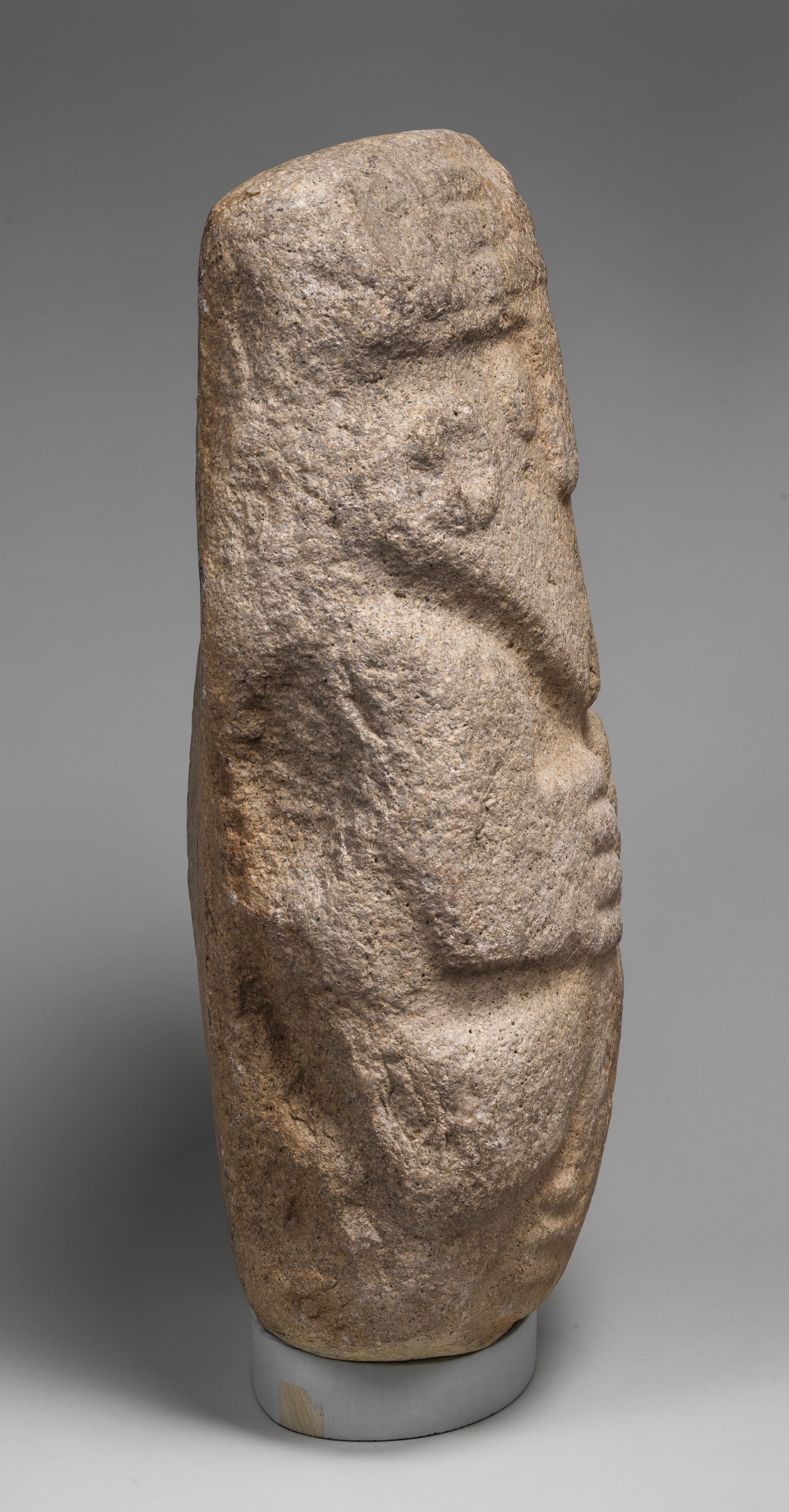Boulder figure
Stone sculptures were common in the art of Recuay communities of highland Ancash (Peru) between 200 and 700 CE. Some were architectural, integrated into the walls and doorways of building; others were free-standing figures, likely intended to be viewed in the ceremonial spaces of the Recuay villages and towns.
This male figure is shown seated cross-legged with his hands held to his chest. The position of the figure resembles the manner in which the bodies of the deceased were arranged before they were wrapped with textiles to form bundles. This funerary tradition was intended to help the transformation of important members of the community into ancestors. In their new bundled bodies, these deified individuals continued helping their surviving relatives by interceding with forces of nature.
Archaeologist George Lau (2016) considers that these statues of ancestors may have been made to replace the original bundle, once it had disintegrated or was destroyed either by natural (i.e. decay) or cultural causes. Many stories recorded in early Colonial-period documents (1530-1700 CE) show that for many Highland Andean communities, the transformation of important deceased individuals into stone permitted such ancestors to survive in a more durable medium (Lau, 2016: 108-110). This extended “lifespan” put these ancestors in the position of influencing the lives of several generations of descendants. Ancient Recuay families may have seen this sculpture as an important ancestor, so old and so revered that it became lithified.
In the Central Andes, the organic bodies of people becoming ancestors were bundled with richly decorated textiles; this ancestor stone statue, however, is shown unclothed. It is possible that these figures were once wrapped with textiles and treated as important members of their communities. These ancestors, in their new bodies, were living near the houses of their descendants who were responsible for feeding them, talking to them, including them in the ceremonies and festivities, and maintaining the memory of the stories that made these individuals prominent in their community in their human, bundle, and stone forms.
Hugo C. Ikehara-Tsukayama, Senior Research Associate, Arts of the Ancient Americas, 2023
References and Further Reading
Ibarra Asencios, Bebel (ed.). Arqueología de la sierra de Ancash: Propuestas y perspectivas. Second edition. Lima: Instituto Cultural Rvna, 2004.
Lau, George F. “Feasting and Ancestor Veneration at Chinchawas, North Highlands of Ancash, Peru.” Latin American Antiquity Vol. 13, No. 3 (2002): 279-304.
Lau, George F. Ancient Alterity in the Andes: A Recognition of Others. London: Routledge, 2013.
Lau, George F. An Archaeology of Ancash: Stone, Ruins, and Communities in Andean Peru. London: Routledge, 2016.
Ponte, Victor. “Transformación social y política en el Callejón de Huaylas, siglos III-X d.C.” Boletín de Arqueología PUCP No. 4 (2001): 219-51.
This image cannot be enlarged, viewed at full screen, or downloaded.
This artwork is meant to be viewed from right to left. Scroll left to view more.





